While researching exciting places to go when I got to Europe, I came across some photographs of an abandoned village in southern Italy. I sent the link to Cesco, lamenting the fact that such a cool place was so far away from his home town and that I probably wouldn’t get a chance to see it.
His offhand response: “Oh, there’s plenty of abandoned villages in Italy!”
Thus a mission was born, and turned all my Google prowess towards finding such a place in Piedmont. Luckily with the recent popularity of urban exploring, I was able to find directions to the village of Leri Cavour, located in the midst of farmland only one hour drive from Biella. Bingo!

Now here’s the part where I ask you that if you are going to visit this place yourself, please be respectful. Places like this are a hotbed for vandalism and I’d hate to think that my blog played any part in encouraging anyone to damage this fascinating place.
We set off south from Biella after lunch on yet another hot sunny day. Our path seemed to lead directly into the middle of nowhere and soon we were heading down a straight narrow road between fields of lush green corn and rice. The only other vehicles we met were freight trucks, and it was an uncomfortable squeeze for us to pass by them. As we continued I noticed two distinct conical towers on the horizon, the cooling towers of the now-defunct Enrico Fermi Nuclear Power Plant. Italy once had four functioning nuclear reactors but halted its nuclear programs after the Chernobyl incident swayed public opinion against nuclear power. This one ran from 1964 until 1990.
As a consequence of this move, Italy is now the world’s largest net importer of electricity.
Passing through Lachelle, the last village before we reached our destination, I noted that even this town looked basically deserted as most buildings were dilapidated and there was not a soul to be seen.
To our surprise, we seemed to be heading right towards the old power plant. Soon we discovered that our destination was directly next door to the abandoned reactor, adding an extra creepy dimension to the place. Turning on to the small unnamed road leading to the township we got our first glimpse of Leri Cavour. It was truly a proper village – even a church spire could be seen poking up above the overgrown rooftops.
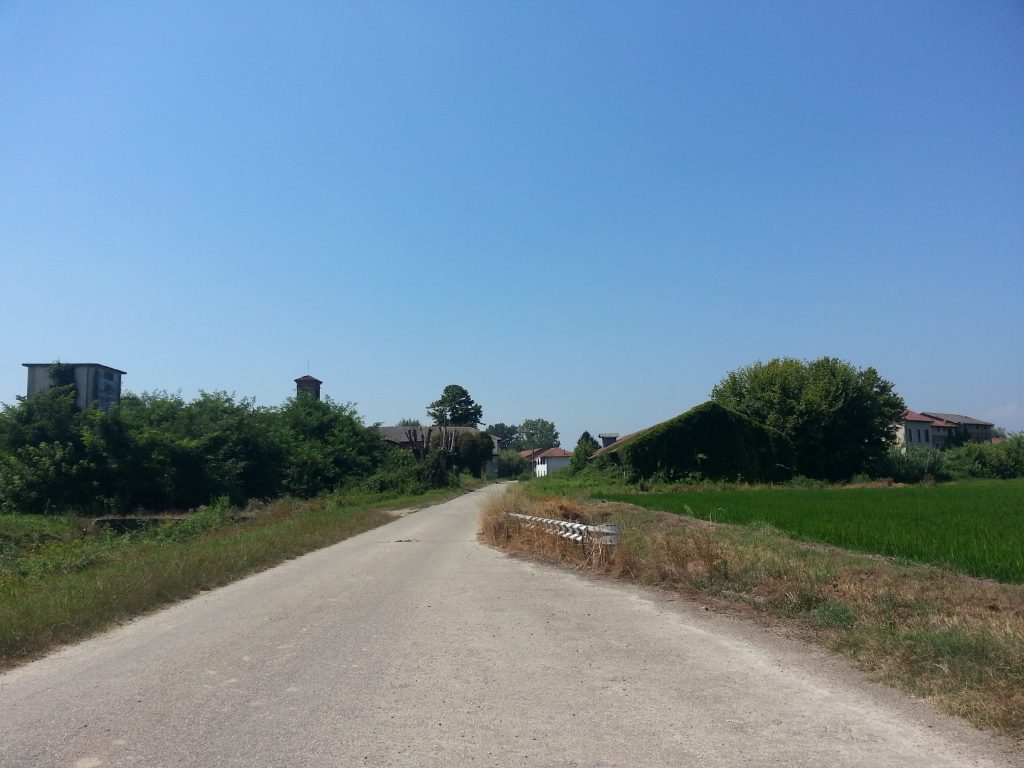
We drove into the centre of town and parked in the town square next to a central roundabout overgrown with wild strawberry plants. There was a large sign hanging from one of the buildings, saying something about a restoration project, but there was no current evidence of any efforts in that vein. Interestingly, the Google street view images of this place taken in 2011 show some effort to maintain the grounds, but recently nature seems to have been given free reign.
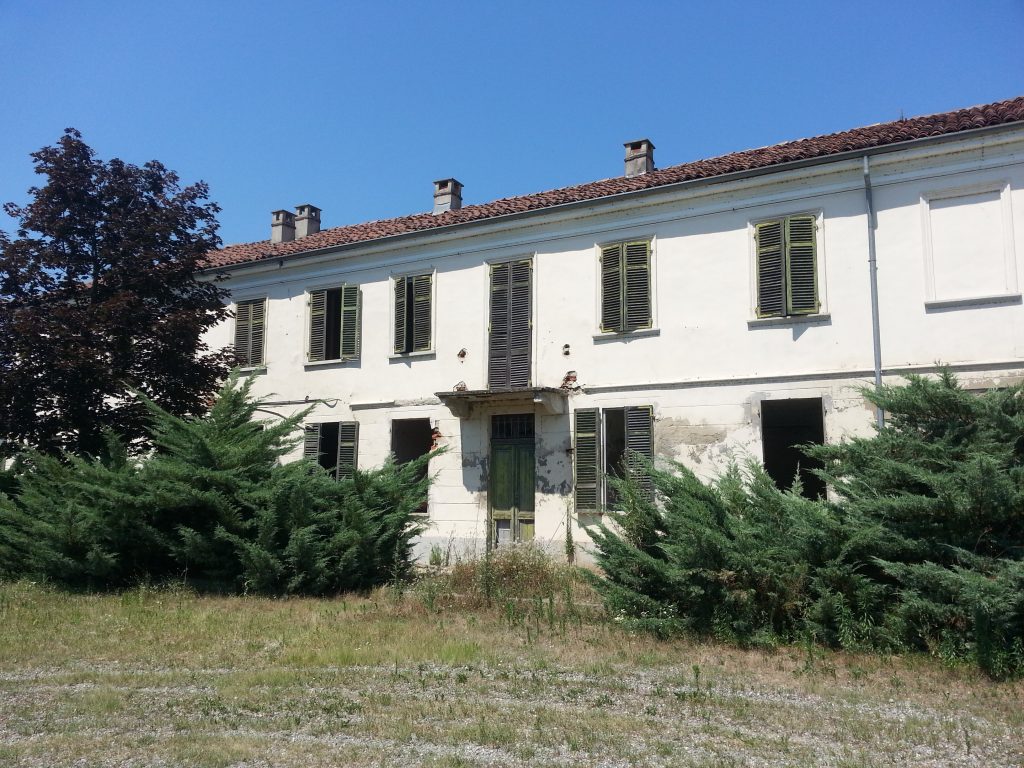
There was one large building nearby which immediately caught our eye, being somewhat more magnificent than the rest. Turns out this was the mansion of the Benso di Cavours, who received this estate in 1822 from Napoleon Bonaparte’s brother-in-law who received it in 1807 from the big man himself. Count Camillo Benso di Cavour is the most famous member of this family, a statesman and politician who was instrumental in uniting Italy and became its first Prime Minister. He would come to this estate in times of rest, and as a big believer in the role of new technology for the advancement of Italy, also used the surrounding land to conduct farming experiments.

The door to the mansion was hanging open, so we ventured inside. The interior walls and ceilings were decorated with amazing frescoes depicting flowers and urns, cleverly designed to look three dimensional. No furnishings remained and the entire place had fallen into a state of decay. I believe this was to be the main focus of restoration, but it must have stalled at a very early stage as there’s very little evidence of work besides an old tarpaulin in a corner and some beams installed to stabilise a window.
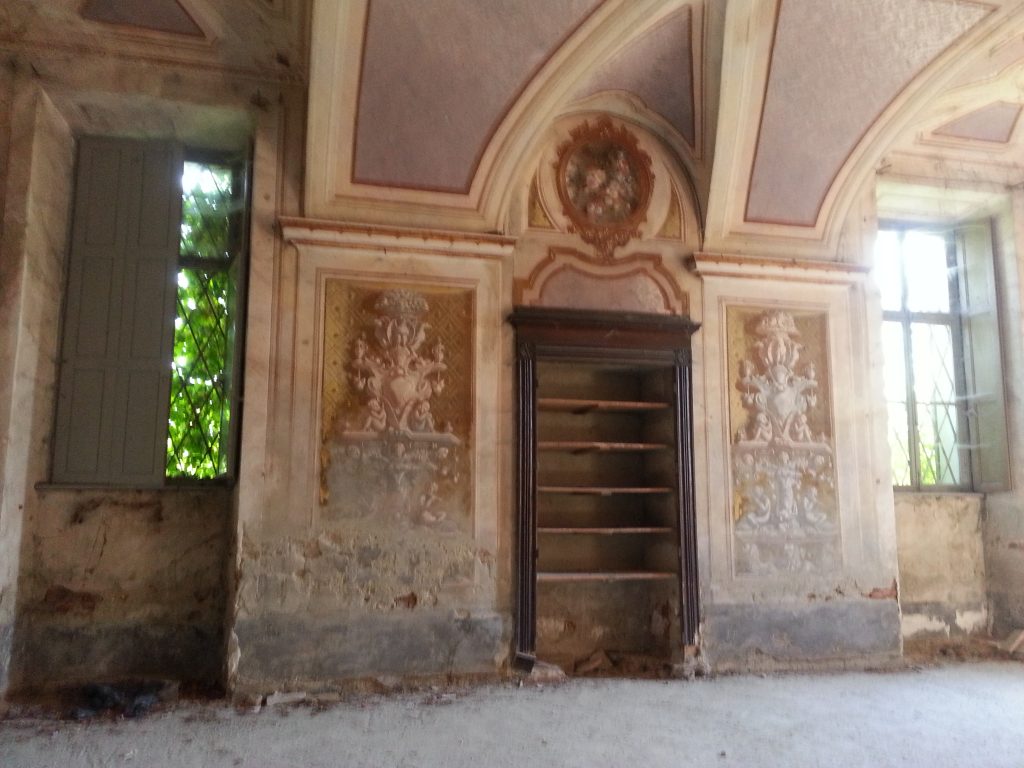
We explored the large manse, poking into rooms, climbing crumbling staircases and looking out from balconies over tangled fields of brambles. One interesting room I called “the blue room” due to the blue-painted walls and vaulted ceiling decorated in blue accented with gold. This place would have truly been magnificent in its time.
Having explored the whole building I exited from a side door. At this point Cesco, having lost interest, left me and went to sit in the car with the air conditioning cranked on full. He doesn’t share my passion for places like this, but is happy to indulge me.
A courtyard next to the mansion is surrounded by two story farm buildings, and I waded through the tangled blackberry bushes to investigate as crows called in the background. You’d think on a bright sunny day a place like this wouldn’t be scary, but I’ve played the Witcher video game series too much to think that a deserted farming village at midday is safe from hauntings – I half expected a noonwraith to appear at any time. When a flock of pigeons erupted out of one of the barns I had to stop to calm myself.

From the farm buildings I returned to the main road through town, gazing into the empty darkened windows of abandoned homes. There had been an attempt to brick up the doorways but somebody had been through and smashed them all down. Garden plants had spilled over fences and invaded the buildings.
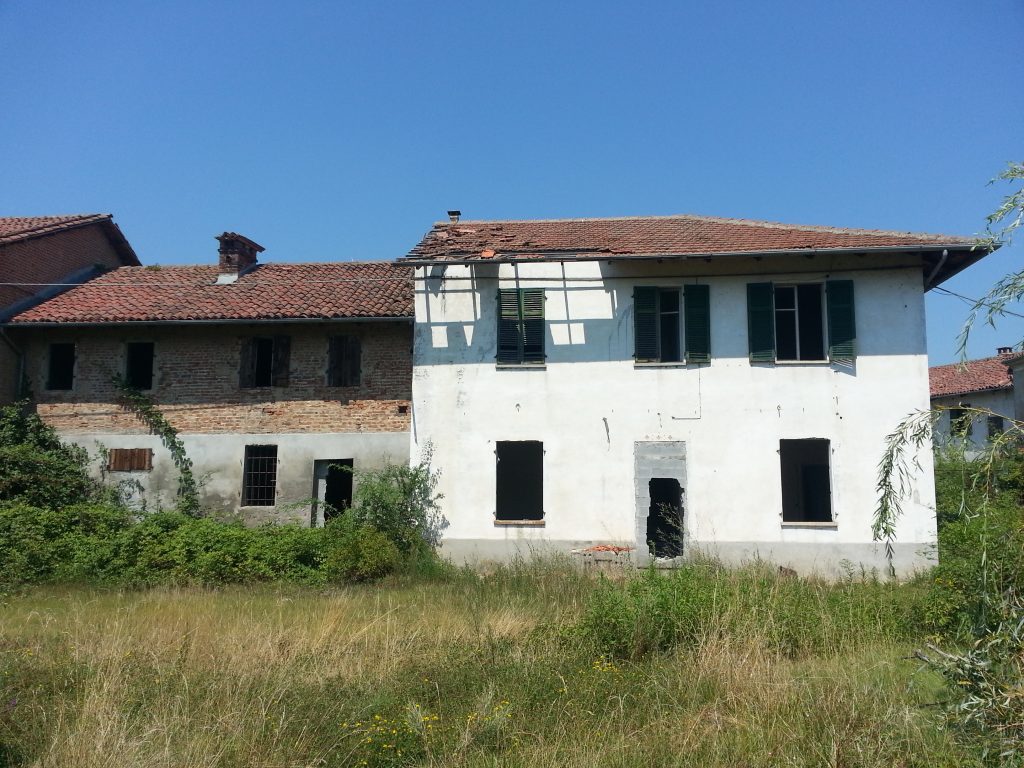
Crossing a concrete bridge across a small channel brought me into the church yard. Unfortunately due to the bright sunlight directly behind the church, it was next to impossible to get a good picture of it from the front.
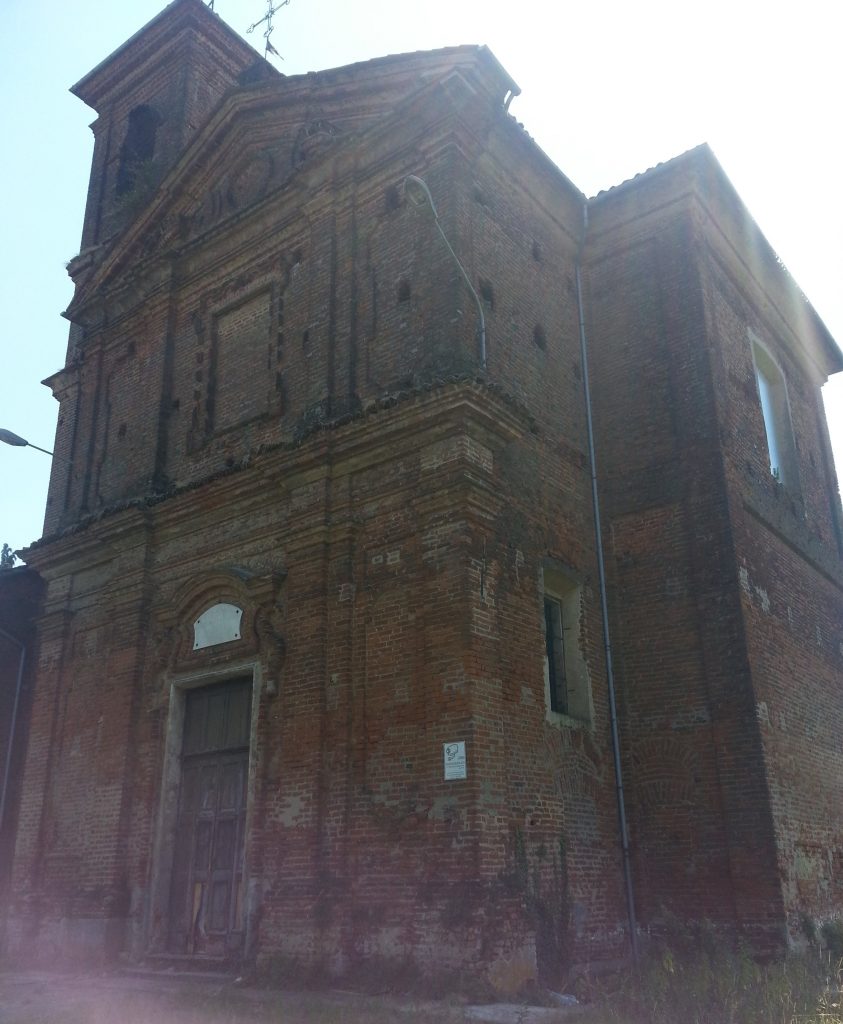
Next to the church is a small building that once served as a school for this little town. There is a plaque affixed to it celebrating the centenary of the unification of Italy, thus proving that this village was occupied until 1961. It seems that a lack of work as farming methods changed contributed heavily to the town’s downfall. Workers for the nuclear plant lived here in the 80s but that would have ended with the closure in 1990. Perhaps the death knell for the town was the Chernobyl incident – who would want to live next door to a nuclear power station after that?

Tour complete, it was time for me to rejoin Cesco and leave the ghost town. Perhaps one day Camillo Cavour’s mansion will be restored and this valuable historic spot will host more than just the occasional curious visitor, but for now Leri Cavour stands empty and crumbling amongst the green fields.
References:

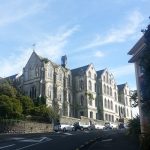

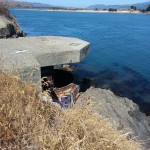
Wow what an interesting view into history this is. Pity the restoration has lost its way.